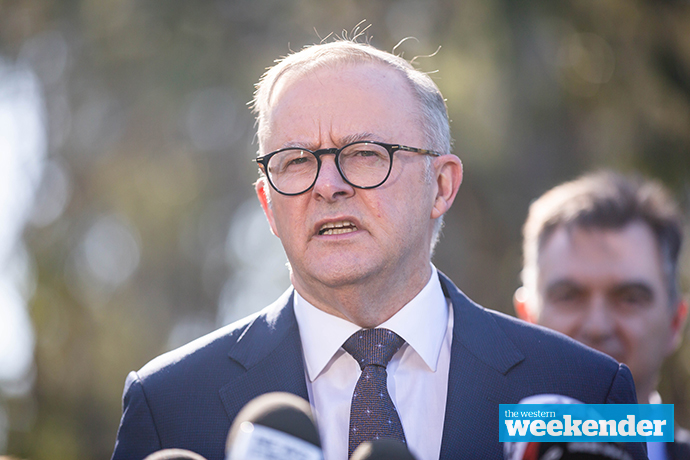 There is no question that something has to be done about the dangers of social media when it comes to our kids, but it will ultimately be parents, not the Federal Government, who will need to be on the front foot when it comes to change.
There is no question that something has to be done about the dangers of social media when it comes to our kids, but it will ultimately be parents, not the Federal Government, who will need to be on the front foot when it comes to change.
Last week, Prime Minister Anthony Albanese announced Australia would move towards implementing a social media ban for all children under the age of 16.
“Social media is doing harm to our kids and I’m calling time on it,” Albanese said.
He is not wrong.
We’ve all heard the tragic stories of youth suicide linked to social media, and we all know that bullying – once confined to school hours – is now a 24/7 concern.
But while final details of any legislation is yet to be developed, we all must accept there will be holes in this plan.
Trying to develop water tight rules in this space is like trying to stop a torrential downpour with one of those umbrellas from a fancy cocktail.
The first holes emerged when it was suggested that Snapchat, a popular messaging service, could avoid the ban because it was not technically a social media site.

That has since been denied, which poses an interesting conundrum.
Messaging is available in all sorts of different forms. Presumably the government knows this, though it will likely always be a couple of steps behind the kids.
If there is a game, an app or a platform where instant messaging is available, you can rest assured kids will find it.
Which means the government is likely to face a barrage of balls it must juggle when it comes to what is and what isn’t banned.
As a side note, Snapchat must obviously be considered in any ban. Anyone who knows how that service works knows that if you don’t ban Snapchat, the anti-bullying intention of these laws are almost pointless.
The next hole emerged when it became apparent that even YouTube could be banned for under 16s under the new laws.
That will obviously need to be sorted out, especially given the millions of hours of age-appropriate content that children watch on the platform – from toddlers all the way to teenagers.
With the odd exception, YouTube generally offers a safe place for kids; especially if they have specific children’s accounts and of course are supervised.
The Government will need to ensure its new legislation does not sweep up services like that in the midst of its good intentions.
Which is where parents come in.
The only way these rules possibly work is if parents are completely on board.
Because let’s not forget this: Facebook has always had an age limit, with users under 13 not allowed on its platform.

TikTok has the same age restriction, as does Instagram, with the latter recently rolling out additional changes for younger users.
Despite all these rules existing, plenty of kids under 13 are on the platforms. The system is easily beatable.
While the Federal Government’s legislation will likely impose hefty fines on social media companies that allow the rules to be flouted, even that will raise questions.
The plan as it stands has no penalties in place for parents, or for children who manage to sign up despite being under 16.
So in other words, the actual person breaking the law has no ramifications, while the social media service that has been gamed by said child will face significant fines.
Now it’s likely those fines will relate to specific technology being introduced in regards to age verification, and not fines for individual breaches; which would be almost impossible to prove and would surely be defeated by the logical legal argument that the end user lied on sign-up.
And so how does the government expect social media companies to police it?
Does it expect passports and identification documents to be required to sign up for a social media account, which certainly seems over the top?
All of this will be answered in the time to come but what’s clear is that this not going to be a simple process.
Of course, that does not mean the government shouldn’t be pushing for this.
It’s clear something needs to be done to stop the tragic results of online bullying, much of which is done via social media.
But will not be the silver bullet, and as much as some bullying moved from the playground to the dark world of social media, it will simply move somewhere else, one would expect.
Which is again, why it comes down to parents.
I speak to principals and teachers all the time who tell me now more than ever, parents are blame shifting.
It’s the school’s fault their child is a bully, or more commonly, there is a failure to accept their child might be the problem.
Principals and teachers tell me that parents more than kids are often the core reason bullying issues aren’t fixed, or at least fixed as swiftly as they could be.
And with discipline in both schools and households perhaps not what it once was, we’re seeing a shift in how bullying is handled.
The government has received a lot of publicity for its proposed ban this past week or two.
It deserves credit for not putting its head in the sand and for at least trying to fix some of the issues confronting our kids.
But it has opened up a Pandora’s box, and I’m not sure we’ll reach the conclusion we’re all hoping to find.

Troy Dodds
Troy Dodds is the Weekender's Managing Editor and Breaking News Reporter. He has more than 20 years experience as a journalist, working with some of Australia's leading media organisations. In 2023, he was named Editor of the Year at the Mumbrella Publish Awards.
